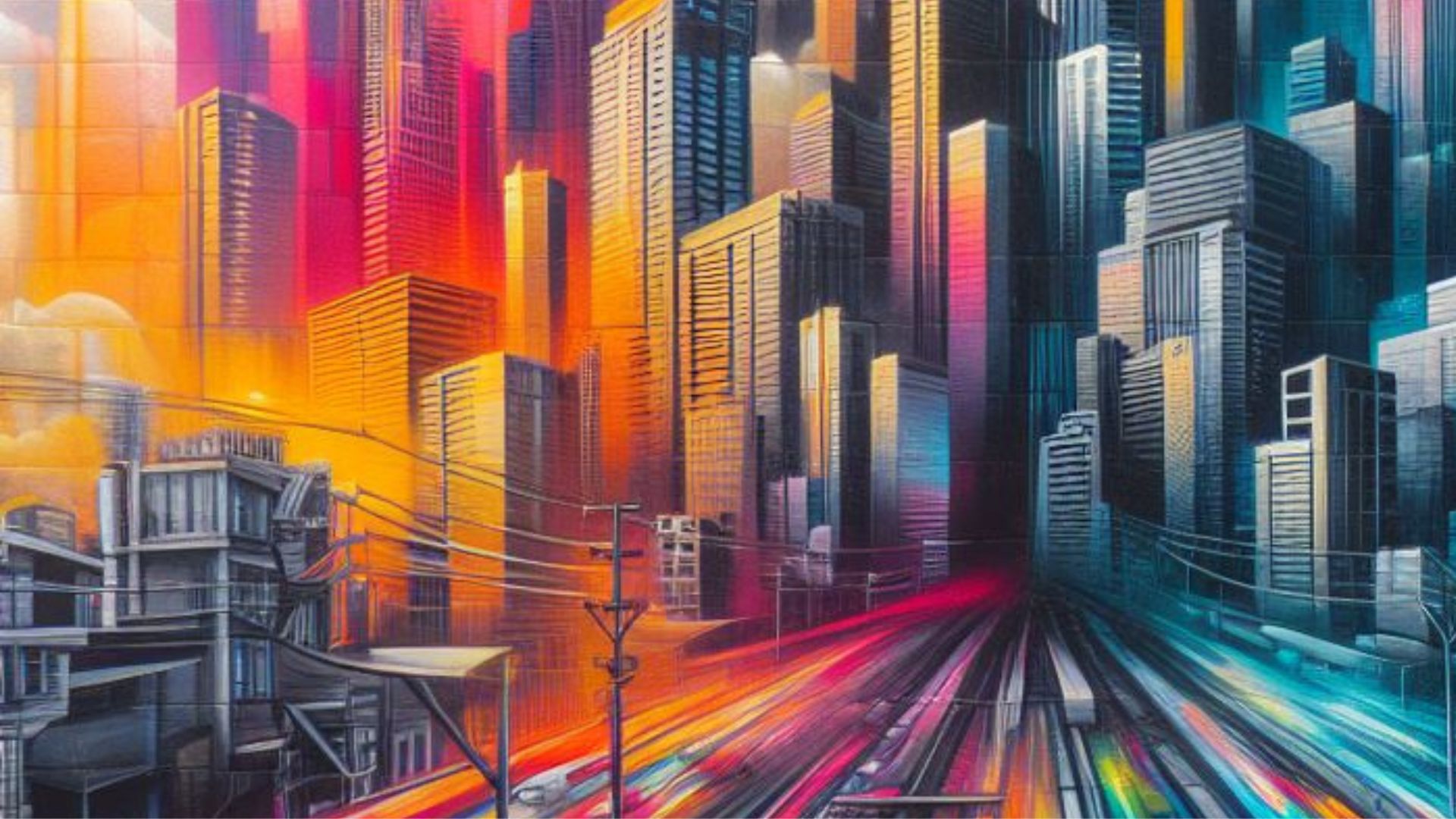Bringing life and vibrancy to a cinder block wall through color blending requires technique and precision. Whether you’re a seasoned muralist or an aspiring artist, mastering the art of blending colors on this unique surface can yield stunning results. Here’s a comprehensive guide to help you achieve seamless color transitions on cinder block walls.
Surface Preparation
Before diving into color blending, ensure the cinder block wall is clean and primed. Remove any dirt, dust, or loose particles by scrubbing the surface and using a primer suitable for masonry surfaces. A well-prepared surface provides a smoother canvas for blending colors.
Choose the Right Paint
Select high-quality acrylic or latex paints designed for exterior use. These paints adhere well to masonry surfaces and offer better durability against weather conditions. Opt for a range of colors that complement each other for a harmonious blend.
Gradient Color Blending Techniques
1. Wet-on-Wet Technique:
Apply the base color evenly across the wall.
While the base color is still wet, blend the secondary color into it using a brush or roller. Blend the edges where the colors meet using gentle, overlapping strokes to create a smooth transition.
For a more gradual transition, work in sections, ensuring the colors are wet when blending.

2. Dry Brush Technique:
Apply the base color and let it dry completely.
With a dry brush, gently layer the second color over the dry base color, using light strokes to create a blended effect. Build up the layers slowly for a seamless transition.
Tools and Blending Aids
Brushes and Rollers: Use high-quality brushes and rollers suitable for masonry surfaces to ensure smooth application and blending.
Spray Bottles or Sponges: Spritzing water onto the wall or using a damp sponge while blending can help keep the surface slightly wet, aiding in color merging.
Practice and Patience
Mastering color blending on cinder block walls takes practice. Experiment with different blending techniques, color combinations, and tools on a small section before tackling the entire wall. Patience is key to achieving the desired gradient and seamless transition between colors.
External Resources for Further Reference:
Explore these resources for additional insights and techniques on blending colors for cinder block walls:
- Mural Joe – Painting a Wall: Color Blending – Video tutorial demonstrating color blending techniques on a cinder block wall.
- The Spruce – How to Paint a Concrete Block Wall – Offers step-by-step guidance on painting techniques for concrete block surfaces.
- Behr – Exterior Paint How-To’s – Provides tips and tutorials for exterior painting, including techniques for different surfaces.
So,…
Blending colors on a cinder block wall demands patience, practice, and the right materials. With the correct preparation, suitable paints, adept blending techniques, and perseverance, you can transform a plain cinder block surface into a stunning canvas of seamless color transitions, adding an artistic touch to any outdoor space.
Let’s dive further into enhancing your mastery of color blending on cinder block walls.
Layering for Depth and Dimension
3. Layering Technique:
- Start with a base color and let it dry.
- Apply a second color over the base, using a slightly translucent or diluted paint to create depth. Gradually build up the layers, allowing each layer to dry before adding the next. This technique adds dimension to the blending.
Harmonizing Colors and Textures
4. Harmonizing with Textures:
- Experiment with different textures and tools, such as sponges, rags, or even crumpled plastic bags, to create unique blending effects.
- Combine blending techniques with texturizing methods to add depth and visual interest to the mural.
Embracing Contrast and Consistency
5. Contrasting Effects:
- Explore contrasting colors to create striking visual impact. Contrasts can add drama and highlight specific areas of the mural.
- Maintain consistency in stroke direction and pressure while blending to achieve a uniform and professional finish.
Protecting and Preserving the Mural
After completing the blending masterpiece, ensure its longevity with proper care:
- Sealant Application: Consider applying a clear, weather-resistant sealant to protect the mural from the elements and UV damage.
- Routine Maintenance: Regularly inspect the mural for any signs of wear or damage and perform touch-ups as needed to maintain its brilliance.
Practice, Adapt, and Innovate
Remember, each cinder block wall presents a unique canvas. Practice different techniques, adapt to the surface’s characteristics, and innovate with blending methods to discover your signature style.
Conclusion
Mastering color blending on cinder block walls is a blend of technique, creativity, and adaptability. With patience, experimentation, and the right tools, you can transform a simple surface into an artistic masterpiece that captivates viewers with its seamless color transitions and visual allure.
Comparison tabular
| Technique | Description |
|---|---|
| Wet-on-Wet | Blend colors while the base coat is wet, using gentle strokes for seamless transitions. |
| Dry Brush | Layer colors with a dry brush over a dried base coat, building up layers for a blended effect. |
| Layering | Apply translucent layers of color over a base to create depth and dimension in the blending. |
| Harmonizing with Textures | Experiment with different texturing tools alongside blending techniques for added visual interest. |
| Contrasting Effects | Use contrasting colors to create impactful visual elements within the mural while maintaining consistency in blending. |
Each technique offers its unique approach to achieving seamless color transitions on cinder block walls. Experimentation with these methods can help artists discover their preferred style and create captivating murals that stand out.
Wrapping up
Blending colors on cinder block walls isn’t just about painting; it’s an art form that transforms ordinary surfaces into captivating murals. From wet-on-wet blending to experimenting with textures and contrasts, every technique adds a layer of creativity to your masterpiece.
Remember, practice makes perfect. Experiment with different methods, adapt to the surface, and let your creativity flow. With patience, dedication, and a dash of innovation, you’ll turn blank walls into vibrant stories that captivate and inspire.
So, pick up your brushes, embrace the canvas of cinder blocks, and let your colors blend seamlessly, creating a tapestry of art that breathes life into outdoor spaces.

For over a decade, I’ve been Mike, an artist, crafter, and designer deeply immersed in the Croc world. I thrive on crafting unique, size-inclusive patterns, fostering creativity, and sharing them on ktforum.com. My designs aim to ignite your creative spark and delight you, ensuring clarity and ease of use through rigorous testing. Join me in expressing your creative flair and showcasing your craft with joy.
Related Posts
- Cleaning Cinder Block Walls Before Painting: A Comprehensive Guide
Painting a cinder block wall can transform its look and elevate the aesthetics of your…
- Painting Cinder Block Walls: Do You Need Primer
Cinder block walls offer durability and strength, but when it comes to adding color or…
- The Role of Sealer Before Painting Cinder Block Walls
When considering painting cinder block walls, the question often arises: is applying a sealer before…
- Transferring Designs onto Cinder Block Walls: Creative Tips and Techniques
Cinder block walls offer a versatile canvas for creative expression, whether it's adding artwork, murals,…

